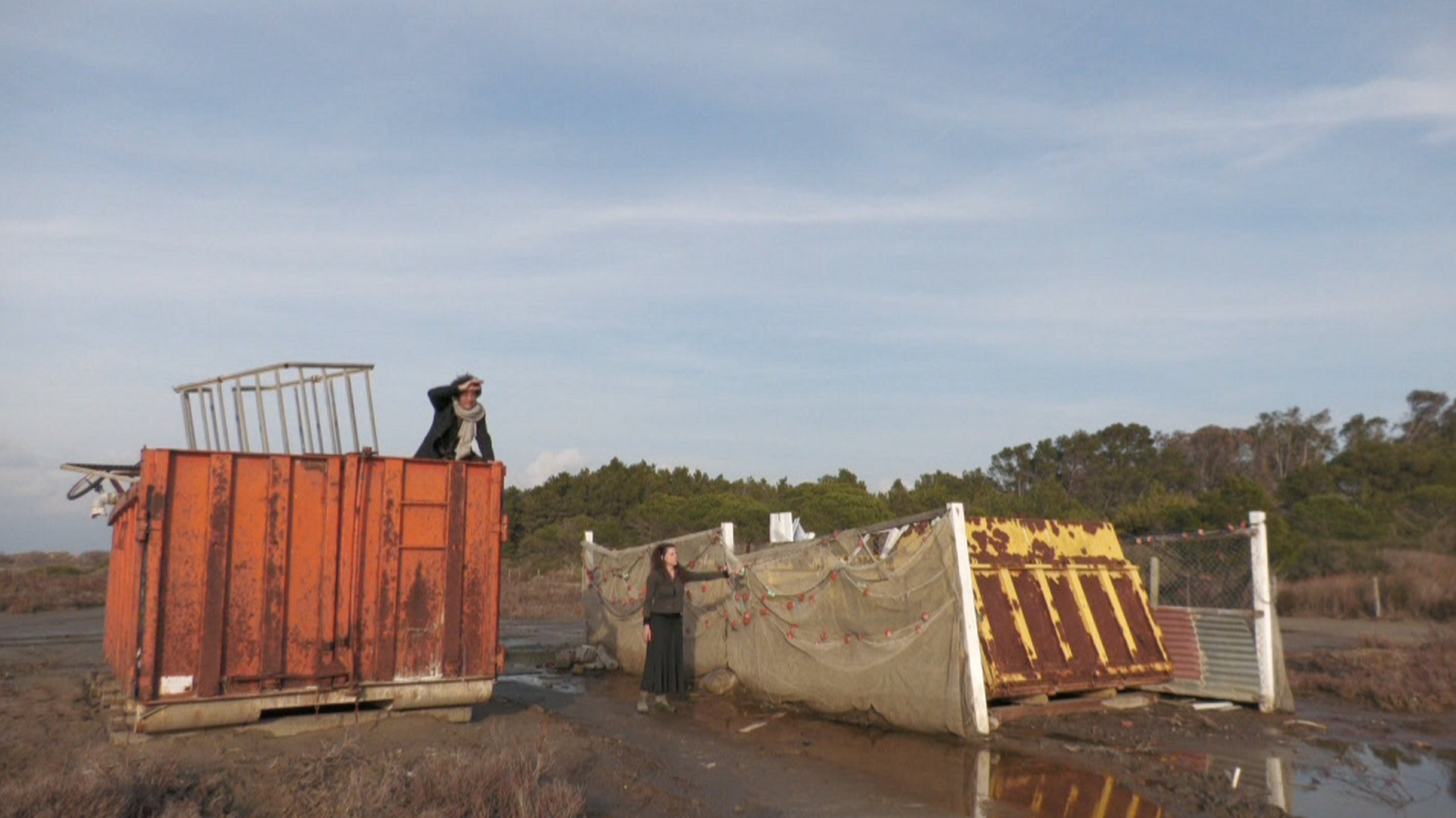Your film is, among other things, a play on the idea of loss, small in appearance, implicitly big. How was it born?
It was born from crystallizing three intuitions, or desires: coming back to the landscape of my previous film without it being the same; re-reading Edgar Allan Poe’s The Purloined Letter¹; bringing a song to life. I had remembered a dialogue from The Purloined Letter I felt was central, which I ended up filming told by Juliette Penblanc and Hugues Breton (once again, my accomplices), but as soon as I started editing I knew the shot would not make it. The only remaining thing from Poe’s text is the equation, that incidentally does not appear as is, as I recomposed it for the film. And it does not reveal anything. Every loss resonates with bigger ones, summons the idea, which is why the resulting disarray and, in the best case scenario, the relief felt are often not proportionate with the importance of the object. Anyone could have experienced this. As for the game, a certain type of game, is vital. It allows to keep going, to not be entirely caught in the necessity for resistance (to the dread and the feeling of helplessness, if not to destruction), to distinguish the void in these sudden losses, the loss marking our existence and setting them in motion. It is also a matter of quest. Of attention. Of the presence of bodies. Of the birth of a gesture.
The structure of the couple seems fundamental: the two characters, the cover of the song… Why was this important?
Love is very present in my work and it is never about a huis clos, more so of putting a multiplicity at stake from the two. Thanks to a game within this two (like in Continûment…) and to a game of quotations, or translation, of other works – here, in particular, this double homage to Poe’s text and to a famous sculpture. The couple is alone in the landscape, but the matter in the only dialogue in Jour après jour like in the letters of Continûement…, is the world. So the film is partly based on the two: two containers, two burial rituals, two flamingos, etc., and the two is also present in The Purloined Letter (which is by the way the second text of a trilogy), but it also subverts it. The equation, for example, is written backwards, expressed enigma, bringing to life the possibility of a multiplicity of gaze. The song is sung twice, but by three voices, since I recorded mine, like a narrator whose story would have been, until then, only visual and sound. And this comes at the same time as a constellation of bird footprints in the sand. You say the song is a “cover”, and that is the right word. In the Kierkegaardian sense, the cover is not a vain repetition, it allows for there to be a beginning. It is also true, I feel, for the shot of the “Kiss”. It is first seen from the window like an intimate scene, and it later appears, unaccomplished, takes shape – on the site itself where had been, very freely, performed the two very famous paintings from Continûement… – but in another frame, vertical, as a brief gesture of homage and offering. But I only saw all of this later on. For me a film is always partly a bet.
Could you tell us more about this song that you wrote?
This song has a long story, a bit crazy and which I care about, and that I cannot tell here. But there is a trace of if, in the form of a brief praise of the failure (or “self portrait with thrush“), in a film welcomed by FID in 2019, La pomme chinoise, whose narrator is a song thrush. For Jour après jour, it felt important to write it from memory, which obviously transformed it. Hughes and Juliette suggested, as their were passing through Marseille, to accompany me by improvising on the alto and the piano. The film is also the result of these encounters.
1. The French title for this book is La lettre volée, “The Stolen Letter”. The director notes the difference between the original title and its French translation.
Interview by Nathan Letoré
